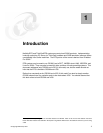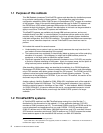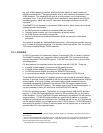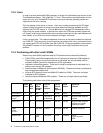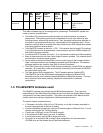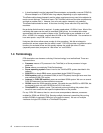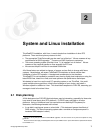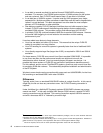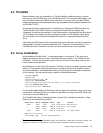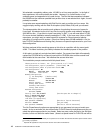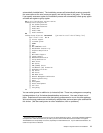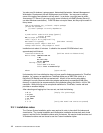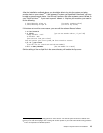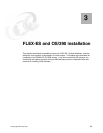
8 S/390 PID: ThinkPad Enabled for S/390
A raw disk (or several raw disks) is required for each S/390 DASD volume being
emulated. For example, if an OS/390 system requires 15 3390 volumes (for the system
and user volumes), then FLEX-ES would need at least 15 raw disks in UnixWare.
A raw disk has no UNIX file system. It can be used (by UNIX programs) as a single,
sequential file. Multiple raw disks are tedious to administer and can lead to fragmentation
issues if not well planned. This disk management has often been the most complex
element of EFS installation on other platforms.
Raw disks are used by FLEX-ES because UnixWare does not buffer access to them.
Instead, FLEX-ES code does all the buffering using designs that are optimized for
emulated S/390 volumes. This provides a major performance boost for FLEX-ES.
3
In principle, FLEX-ES could use standard UNIX files to emulate S/390 volumes. However,
the normal UNIX buffering is not well suited to this emulation and the resulting
performance is poor.
4
Linux has added more factors to these elements:
Linux has raw disks, but buffers I/O for them. This means that the unique FLEX-ES
coding for raw disks is not very effective.
Linux I/O handling for normal file systems is generally faster than that of traditional UNIX
systems.
Linux directly supports large files (larger than 2 GB), as required for 3390-3 and 3390-9
emulation.
For these reasons, FLEX-ES uses normal Linux files to emulate S/390 DASD. It is possible
to use Linux raw disks, but the performance benefits are slight and not worth the
administration efforts involved. Linux has recently begun to support raw devices. It is
possible that future versions of FLEX-ES may use these if performance benefits warrant it.
For this redbook, and for current ThinkPad/EFS systems, we will use only normal Linux files
for emulating S/390 disk volumes. This substantially simplifies installation and administration
of the EFS system.
We plan to use a simple naming convention with names such as /s390/OS39RA, for the Linux
file containing an emulated 3390-3 with volser OS39RA.
Differences
Typically, under Linux, an emulated S/390 DASD volume is a single Linux file. In this case (a
single file), the file can have any convenient name. No FLEX-ES naming convention is
required.
Under UnixWare (for a Netfinity/EFS system) emulated S/390 DASD volumes may occupy
several raw disks.
5
In this case (multiple UNIX files per S/390 volume) a special FLEX-ES
naming convention must be followed. This naming convention requires UNIX file names to
end with a lowercase ASCII “s” followed by a numeric digit.
3
This is not unique to FLEX-ES. Other major UNIX middleware packages, such as some relational data base
managers, also use raw disks for the same reasons.
4
This does not imply that UnixWare disk handling is poor. It is very good for normal UNIX applications. Emulation of
S/390 volumes is a very specific, narrow application that does not match typical UNIX file usage.
5
This is not required, can be done to reduce potential fragmentation issues with raw disk space.




